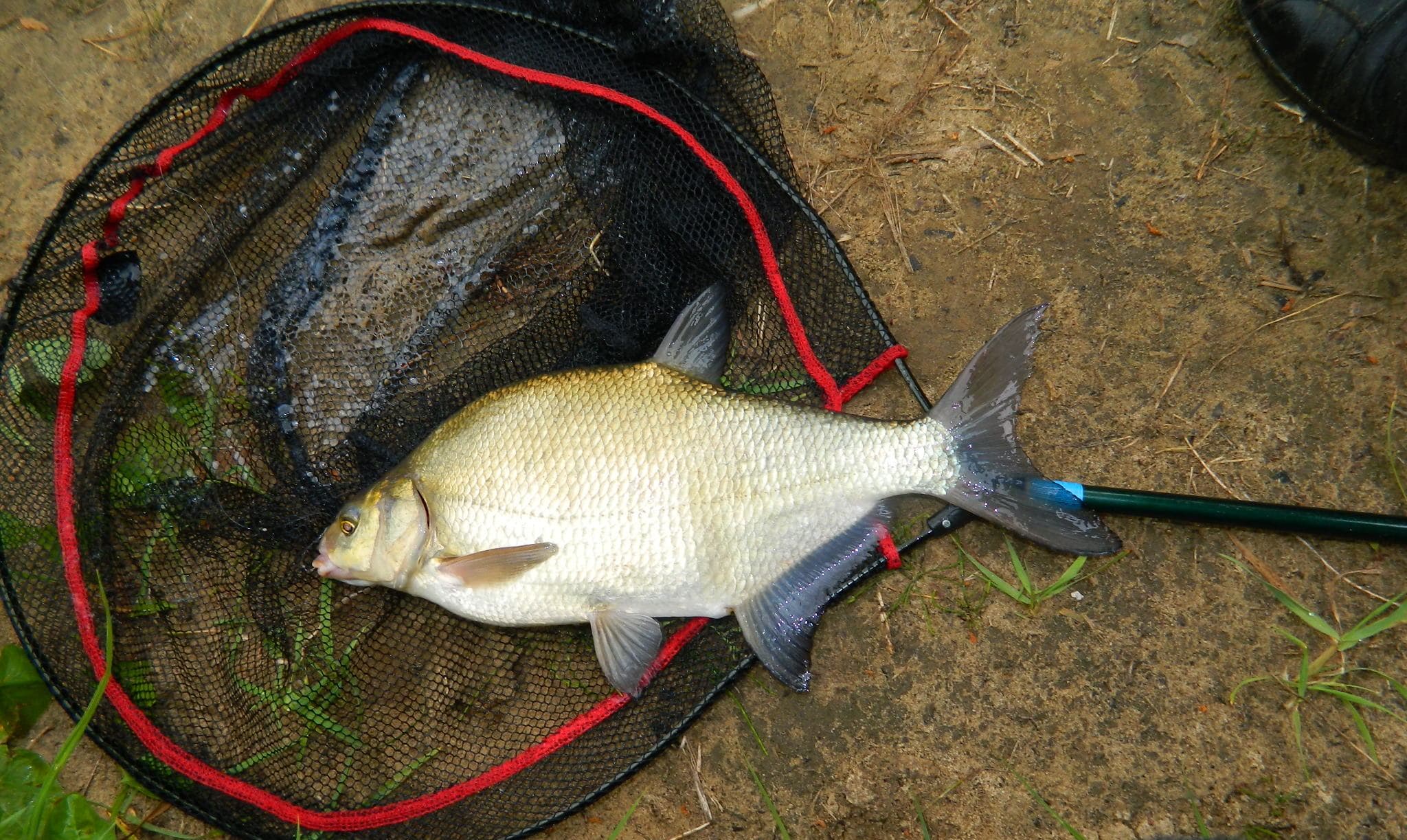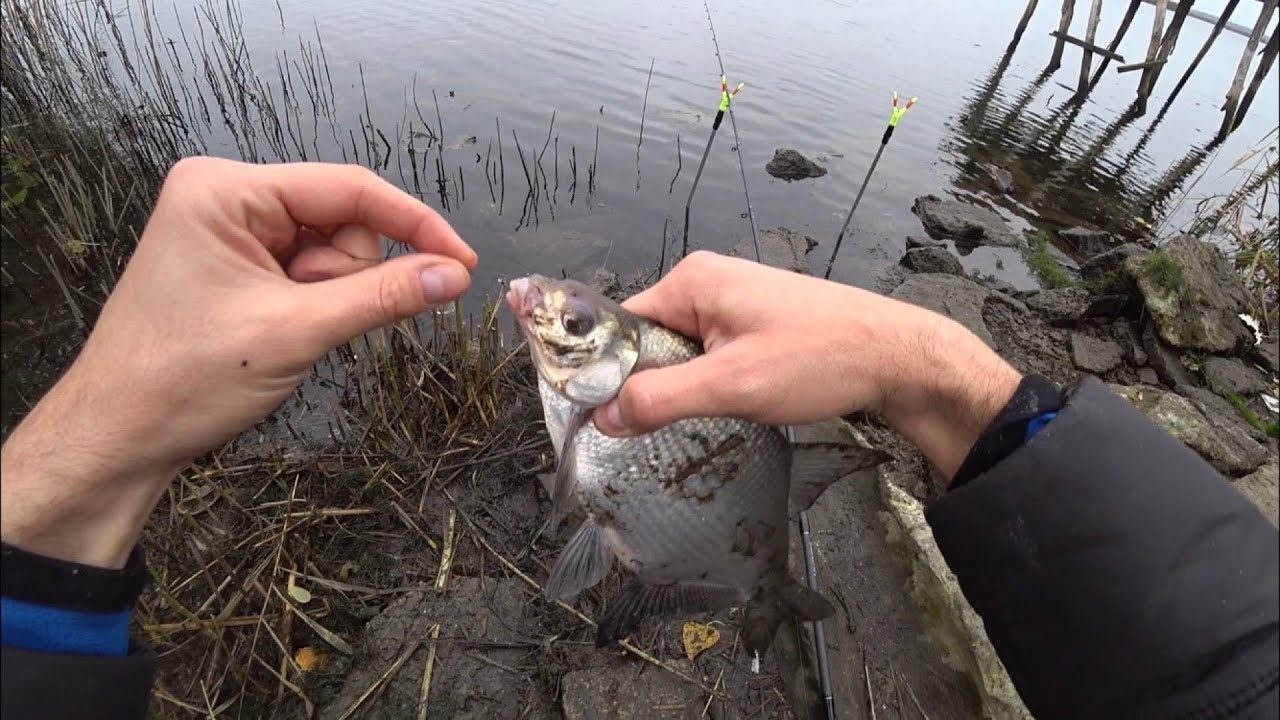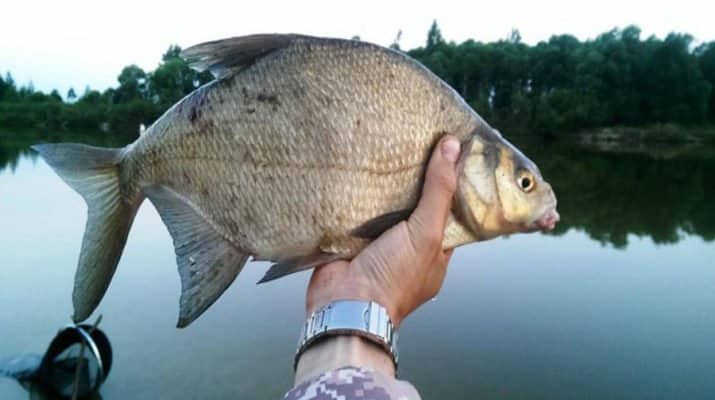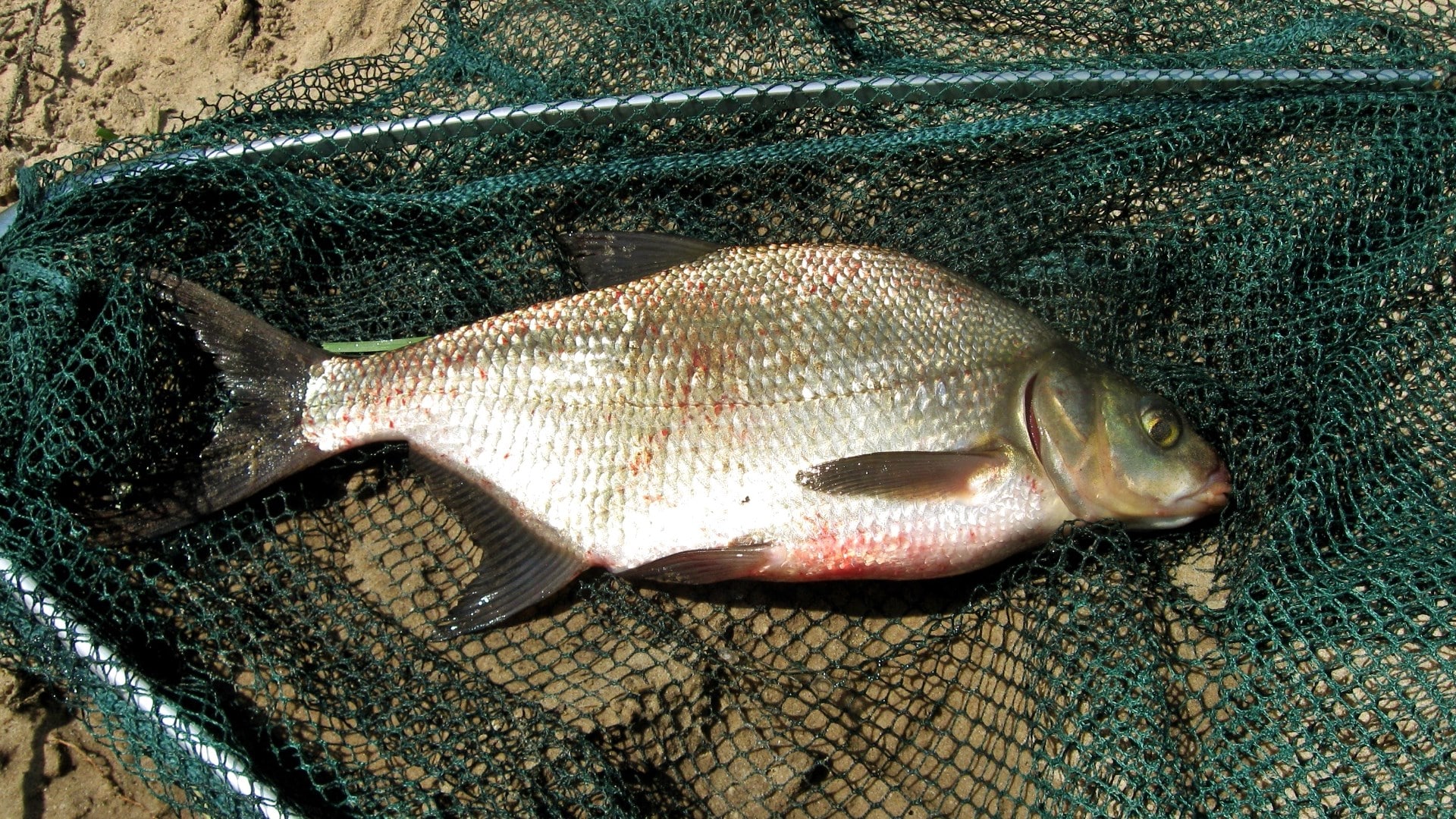For many
feederists, bream is the most coveted trophy. However, due to mistakes in the selection of a place, equipment, choice of fishing tactics, baits and bait, you can be left completely without a catch or be content with the approach of small leucorrhoea, such as silver bream or roach. So, what to look for when fishing for bream on a feeder, how the place and time of fishing affects the selection of gear, tactics and recipes for baits.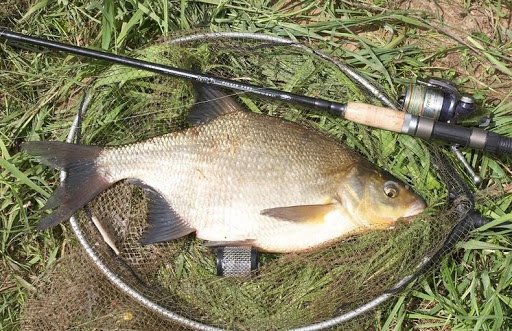
- About bream and its habits – first acquaintance for beginners
- Tackle for feeder bream fishing
- Fishing for bream from the shore in still water
- Fishing for bream from the shore with a feeder on the current
- Fishing for bream from a boat in still water and on the current
- Features of catching bream by seasons
- Spring
- Fishing for bream with feeder tackle in summer
- Autumn fishing
- Catching at night
- Поделиться ссылкой:
About bream and its habits – first acquaintance for beginners
Bream is usually searched for in deep places. There he prefers to spend the daytime. At night, however, this fish can often be found in smaller areas, where it goes out to profit. The bream can rise from the lower edge to the upper edge, or from the pit it can go out onto the shell table. Bream is a bottom fish, it feeds mainly from the bottom, so you need to look for it at the bottom. He loves to be near the edge overgrown with shells. It should be understood that bream is a schooling fish. The bream flocks have developed routes along which they move in search of food. Often this feed accumulates in the unevenness of the bottom. Therefore, the main task of the angler is to roughly get to the place where the bream will pass. Flocks of bream, with the beginning of biting in summer, actively move and ply from one feeding point to another. You can interest the bream with the abundance of properly served feed. Bream is gluttonous, eats a lot,however, he is selective in the very choice of feed. Therefore, the two main factors of successful bream fishing are the choice of the place of fishing and bait. On reservoirs pressed by fishermen, such promising fishing points can be created artificially. You can feed the bream – it will start to turn off its usual route and come to places that are actively fed by fishermen. In wilder places, you still need to pay more attention to getting to the natural feeding point of the bream, otherwise the haphazardly fed place will not attract him. You can feed the bream – it will start to turn off its usual route and come to places that are actively fed by fishermen. In wilder places, you still need to pay more attention to getting to the natural feeding point of the bream, otherwise the haphazardly fed place will not attract him. You can feed the bream – it will start to turn off its usual route and come to places that are actively fed by fishermen. In wilder places, you still need to pay more attention to getting to the natural feeding point of the bream, otherwise the haphazardly fed place will not attract him.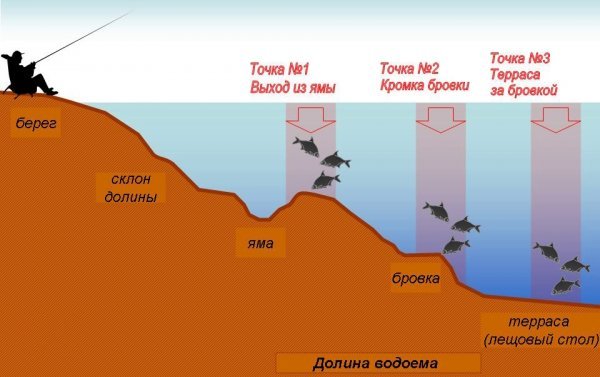
Tackle for feeder bream fishing
For catching bream on a feeder, depending on the fishing conditions, the whole range of feeder tackles and rigs is used. There are several types of feeder rods:
- Heavy.
- Medium.
- Light.
A picker rod is rarely used for bream fishing. But if weights less than 40 grams are suitable for fishing, then a picker can also be used.
The weight of the
feeder is selected depending on the fishing conditions. In a strong current, so that the trough does not drift, a heavy trough is needed. The rod test is selected accordingly. The length of the feeders affects the casting distance of the rig. The longer the feeder, the further it can throw the feeder. However, it is not always convenient to use long feeders on the shore.
If, on the contrary, the fish is cautious, then an increase in the length of the leash can save the fishing.
When using leashes made of thin fishing line, use a feeder gum, a special rubber that dampens fish jerks. A wide variety of feeder equipment is used as rigging, such as:
- Paternoster (Gardner loop);
- Symmetrical loop;
- Asymmetric loop;
- Helicopter and others.
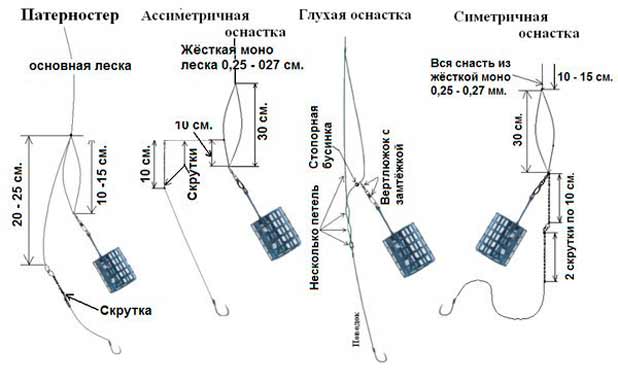
Paternoster feeder equipment – high-quality and efficient installation for catching bream: https://youtu.be/zzBGJEA0ASY Feeders are also used in a variety of ways: metal, plastic, with grousers, with wings, like “bullets”.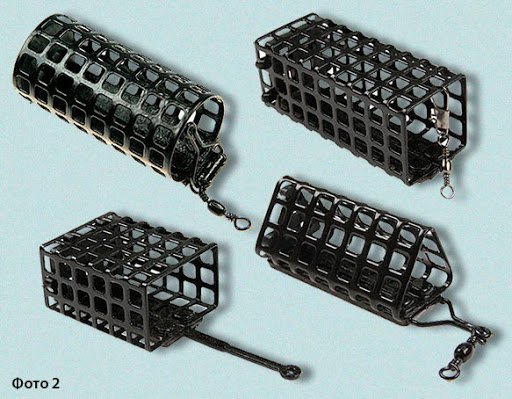
Fishing for bream from the shore in still water
In stagnant water, all the same principles apply to fishing as in the current. A feature of stagnant water bodies may be the absence of any changes in the bottom topography. The bottom can resemble a dug pit, even and flat. In such cases, it is necessary to select one point and methodically feed it. On stagnant waters, picker rods can be used, since the absence of current allows the use of small weights. But sometimes on the lakes a promising place for fishing is located far from the coast. Here you will need long feeders measuring 3.9 and 4.2 meters. On stagnant reservoirs, flat method equipment can be successfully used
. This rig came from
carp fishing, but it is also successfully used to catch bream. It is perfect for pond conditions, as due to its shape it does not burrow into silt. The flat bottom of the trough keeps it on the silt surface. The hook is hidden in the feed at the feeder. Can be used with a
hair rig , just like when fishing for carp.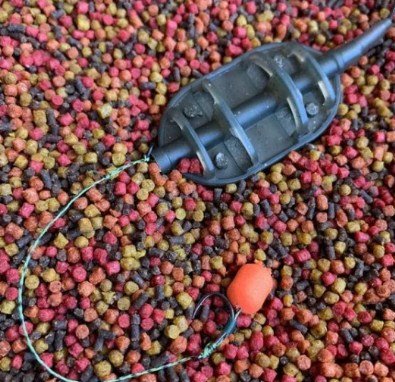
Baituse more crumbly than when fishing on the current. So as not to overmoisten the bait, it is necessary to let the moistened bait brew. That is, add water in two steps. You can use a special bait for stagnant ponds, or you can make it yourself. To do this, you need to use ingredients that will prevent the groundbait from becoming stuck, such as bread crumbs.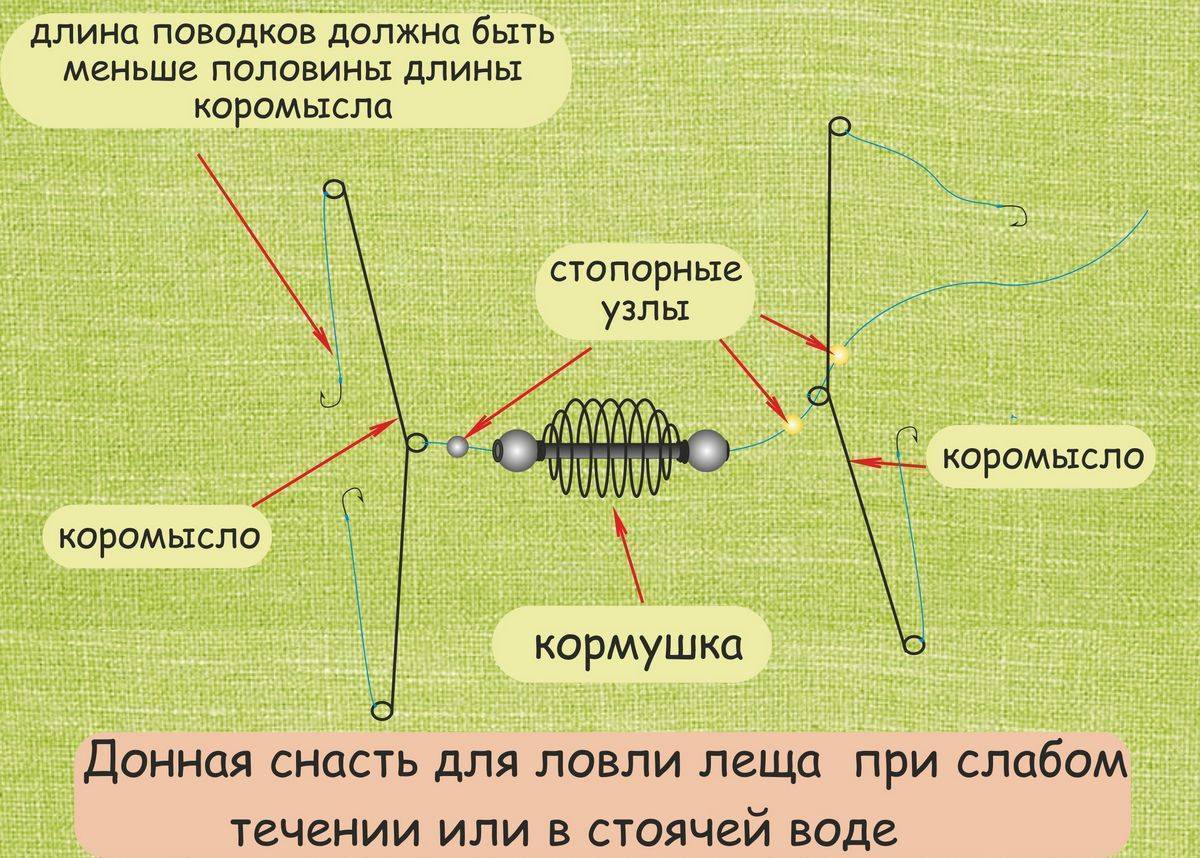
Fishing for bream from the shore with a feeder on the current
This is the most common type of bream fishing. For fishing on the current, rods of the class heavy and extra heavy are used. The weights of the feeders are large so that they can resist the current and not be carried away. Most often, when fishing in the current, when searching for bream, they look for a fall to a depth and an edge. Brok is a part of the river bed before, or after the drop, in fact, the transition from the drop to the horizontal bottom. On the rivers, on the edges, colonies of shells usually settle, the favorite food of bream. Therefore, on the river, special attention should be paid to determining the bottom topography.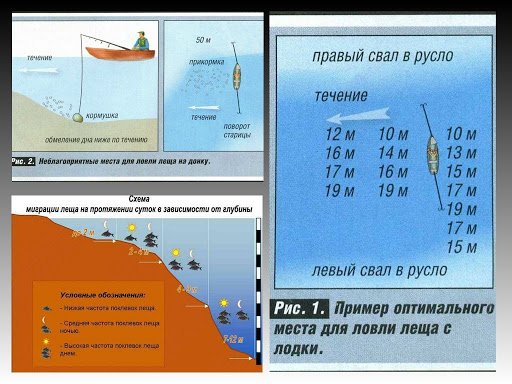
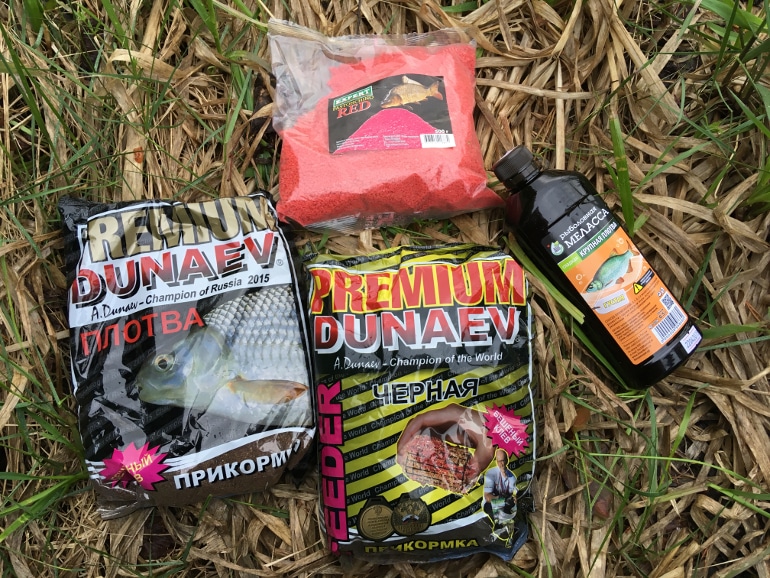
You can buy bait for bream fishing , or make yourself [/ caption] To cut off small fish, use larger components such as peas,
corn and barley. They work especially well with warm water.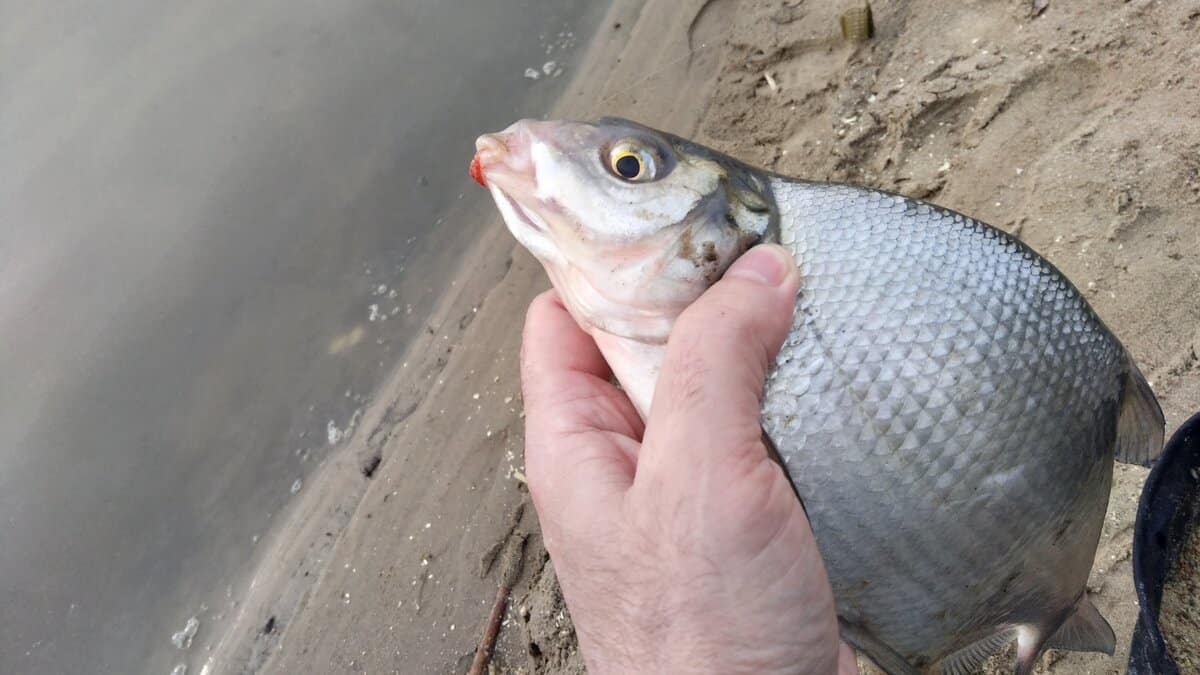
maggot… The bait for the flow must be sticky enough, otherwise it will wash off quickly. To do this, it must be sufficiently moistened and suitable ingredients must be used. There is a large selection of bait for bream for fishing in the current and river conditions. If you do your own bait, you can add flour or semolina, or clay. These are the binders that will make the groundbait sticky. It is imperative to add to the bait those components that are used as a bait. The best baits for cold water are:
maggot , worm and
bloodworm . In summer, corn, peas and pearl barley are added to them. Feeder troughs under water in a strong current – video from under the water: https://youtu.be/FoWCoyoEBpY
Fishing for bream from a boat in still water and on the current
On the boat, you can get as close as possible to the fishing point. There is no need to make long casts, which means you can use a short rod. If there is no current, a picker will do. But if current is present and heavy feeders are needed, a short feeder with a large dough will be needed. Otherwise, fishing with a feeder from a boat is no different from fishing from the shore. It is necessary to take into account the characteristics of the reservoir and the season.
Features of catching bream by seasons
The behavior of fish varies at different times of the year. Therefore, you need to adjust. The taste preferences of bream are changing. Also, its activity, feeding time and foraging routes change depending on the season.
Spring
In spring, bream begins to emerge from the wintering pits and feed. In late April – early May, the fish go to spawn. Before this stage, an increase in bream activity can be observed. But during the spawning itself and after it, the biting dies down for a while. In spring, it is worth looking for bream near the edges, which border on shallow waters – this is an ideal place for future spawning grounds, and here bream prefers to feed in early spring in March-April. Bait for catching bream on a feeder in the spring should be small-fraction and low-calorie. In cold water, spicy aromas work well: coriander, garlic, cumin, dill and other spices. But it’s important not to overdo it with the scent. Otherwise, you can scare away cautious fish. It is worth adding an animal component to the groundbait for cold water. Better to use bait – maggots, bloodworms, worms.You can combine them by planting a so-called sandwich. In spring, the water is more transparent, so you need to pick up thin gear. Fishing for bream in the spring on a feeder – video from the shore of the reservoir: https://youtu.be/ciuArc04gFw
Fishing for bream with feeder tackle in summer
Summer is the most stable period for bream biting. It feeds actively, constantly moving from one feeding point to another. In a particularly hot period, bream can switch to night food. In summer, bream eats a lot, even a lot. It is difficult to overfeed it, so you need a good starter feed, up to 20 feeders. And then, at a good pace, add food to the point. Sweet aromas are added to the bait, because the bream has a sweet tooth. These are fruity aromas, vanilla, honey, chocolate and others. Vegetable baits are also used at the level with animal baits: peas, corn, pasta and pearl barley.
Autumn fishing
With the approach of cold weather, fish preferences change again. September is a great time to catch bream. The fish begins to gain fat before winter and begins to eat more actively. They are looking for her in the same places as in the summer. With the gradual cooling of water, bream flocks go to wintering pits. Taste preferences are again shifting towards the baits of animal origin. The same requirements are imposed on bait as in the spring.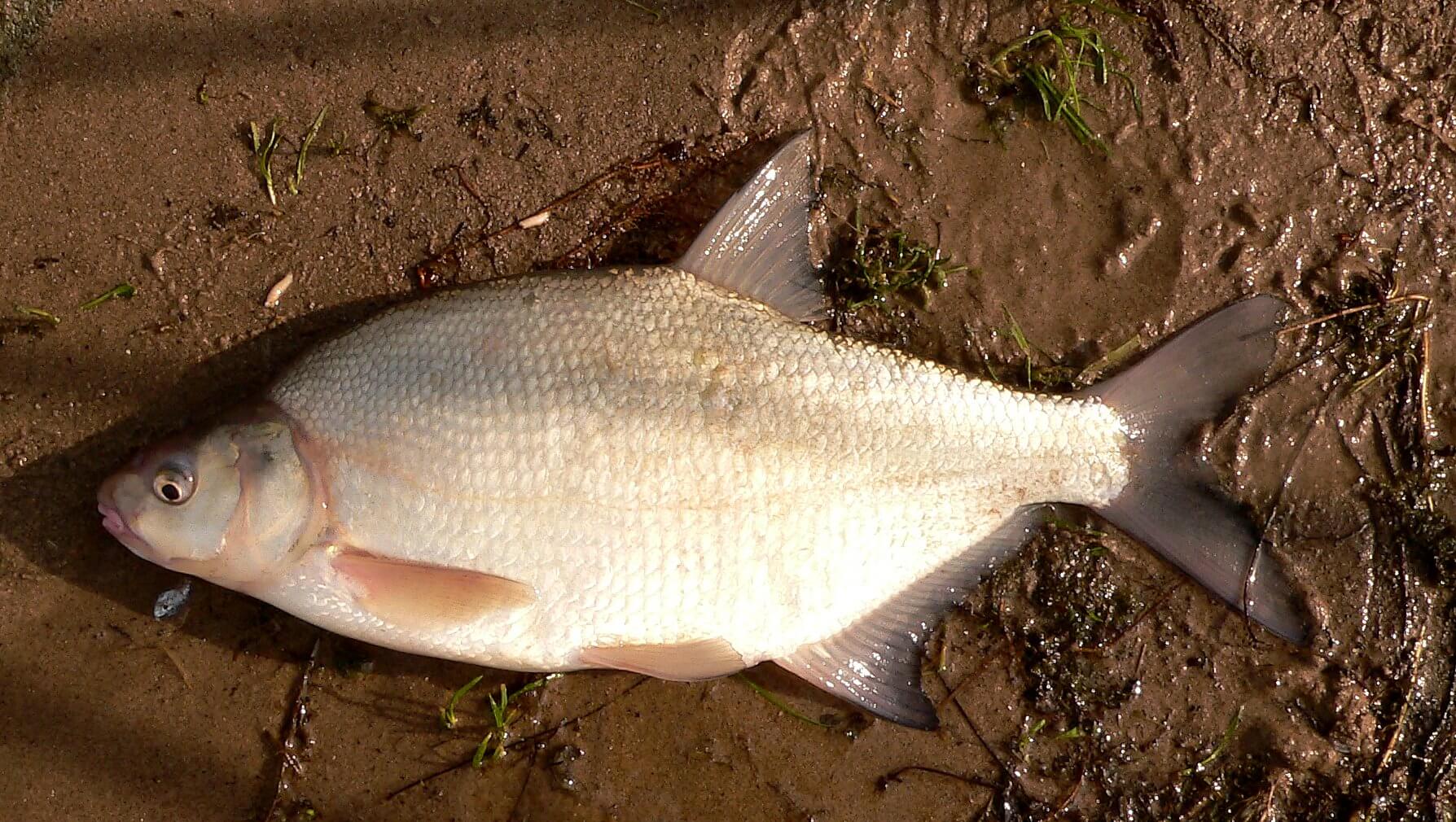
Catching at night
The advantage of feeding bream fishing at night is the absence of the ubiquitous little things that can be collected for bait. Also, this fishing method is actively used in hot weather. Then the bream can change their habits by switching to a nighttime diet. He goes to shallow areas, closer to the coast, and actively feeds there. Promising fishing spots: windows in thickets of grass, sandy beaches with a gentle slope. For coastal fishing, a light feeder such as a picker can be used. However, the fish can continue to stick to the edge, top or bottom of it. Therefore, having found the edge, you can stop at it and fish both the upper and lower parts, although this will require at least two rods. You can feed two zones at once: near and far. The far zone starts working first,since it is from the depths that bream flocks begin to rise. You can feed the far point about 30 minutes before dark. The trifle no longer bothers and the feed will remain intact until the bream approaches.